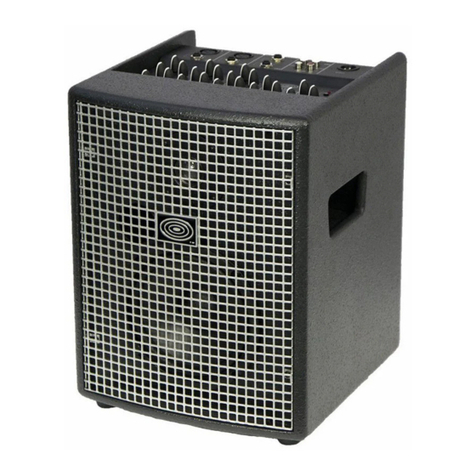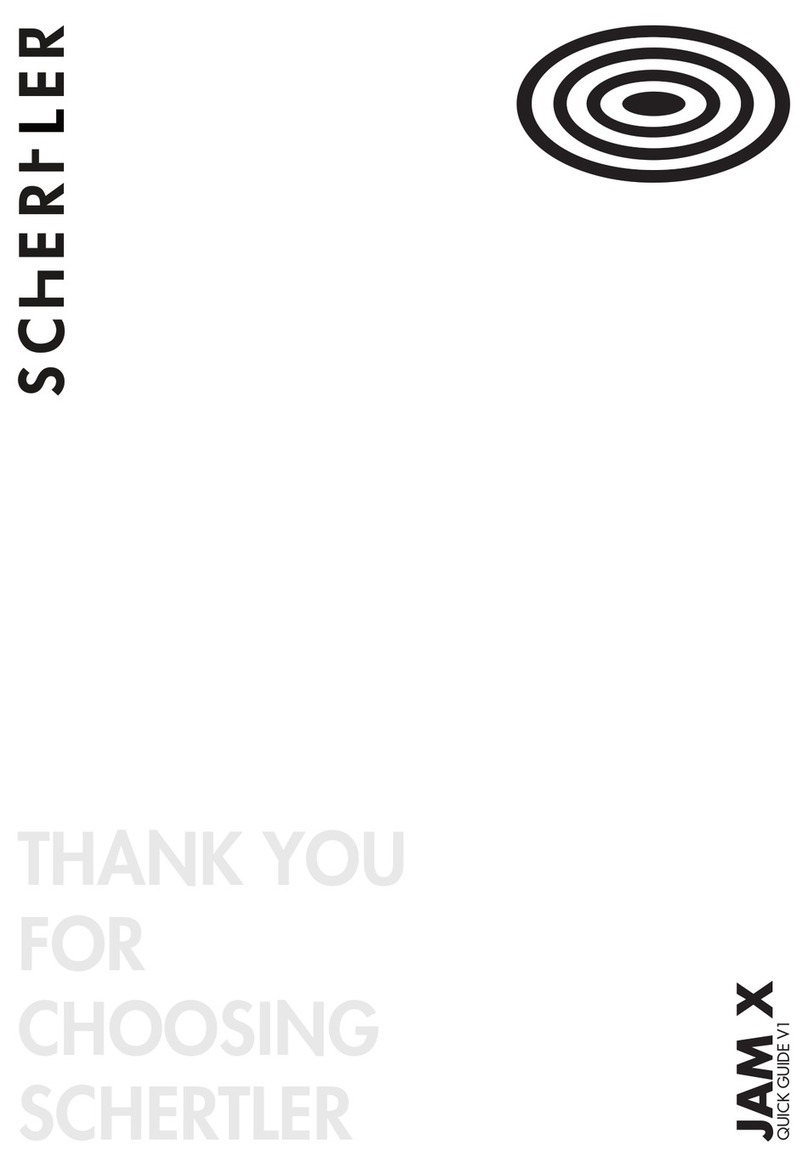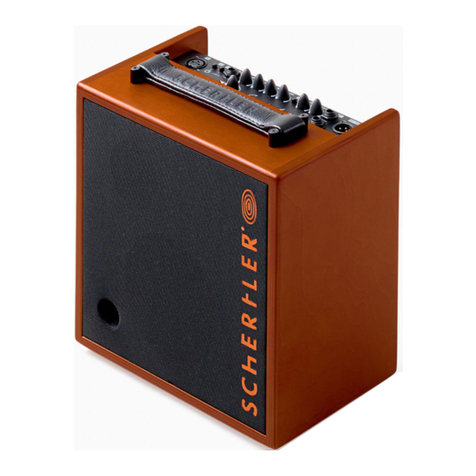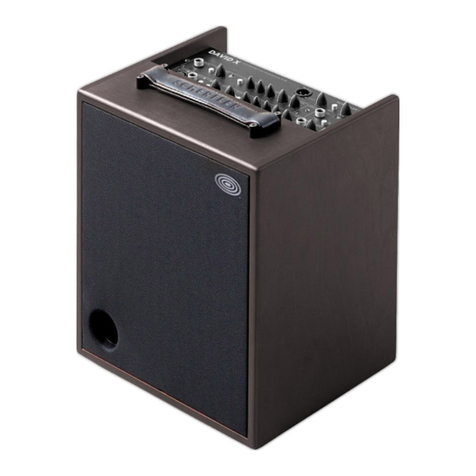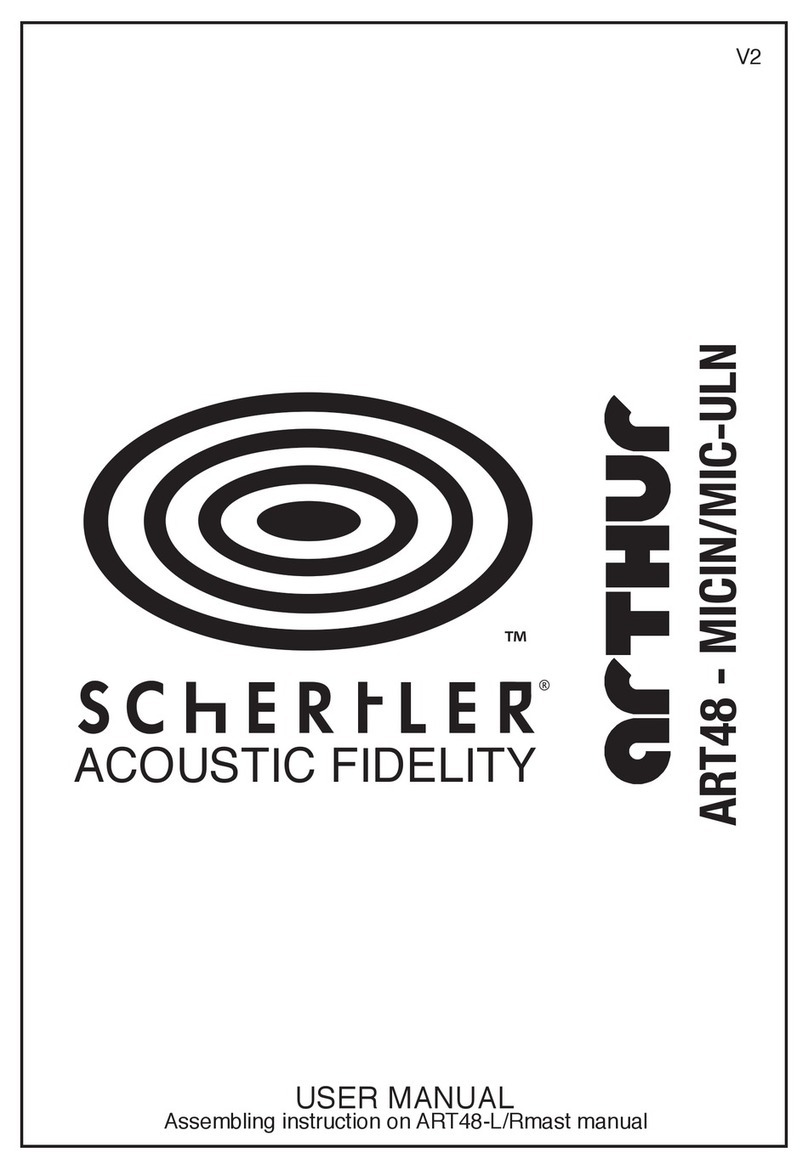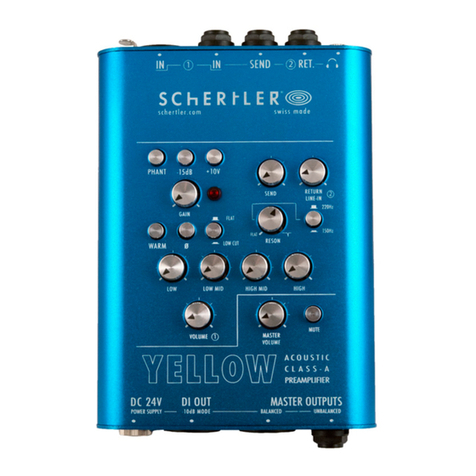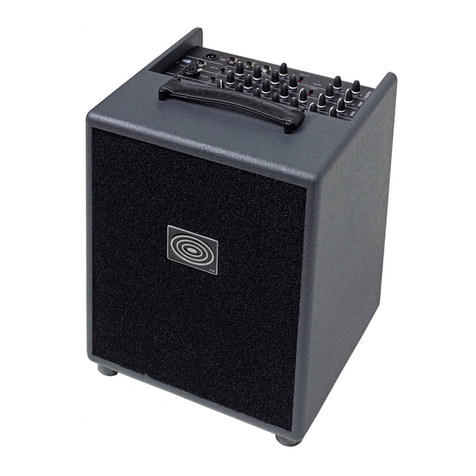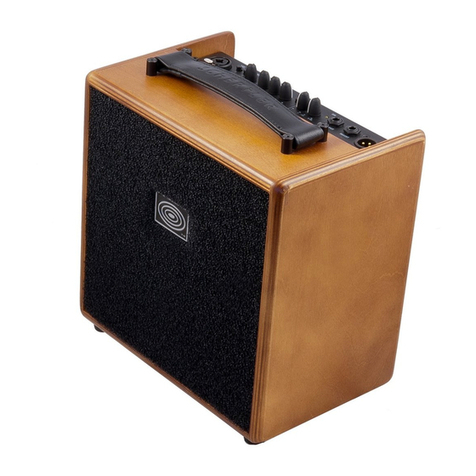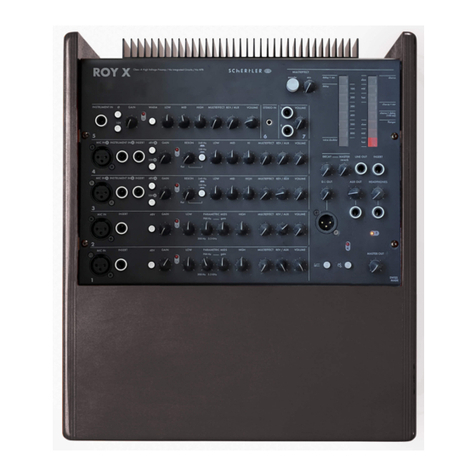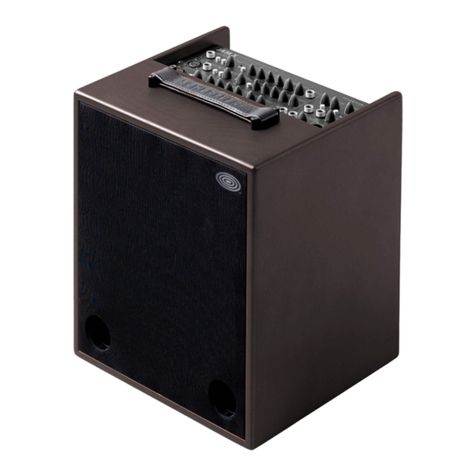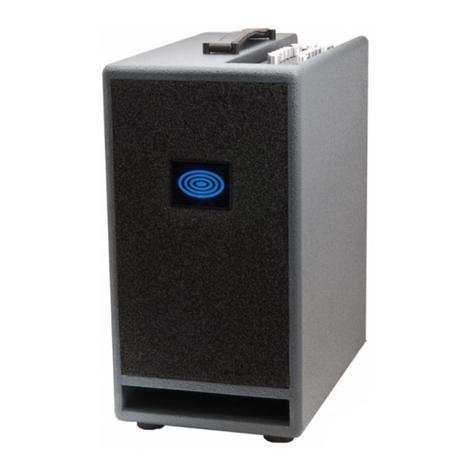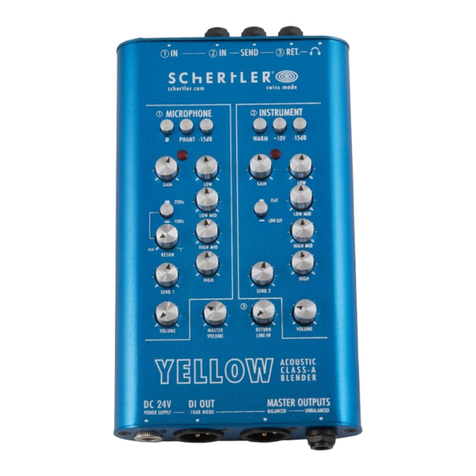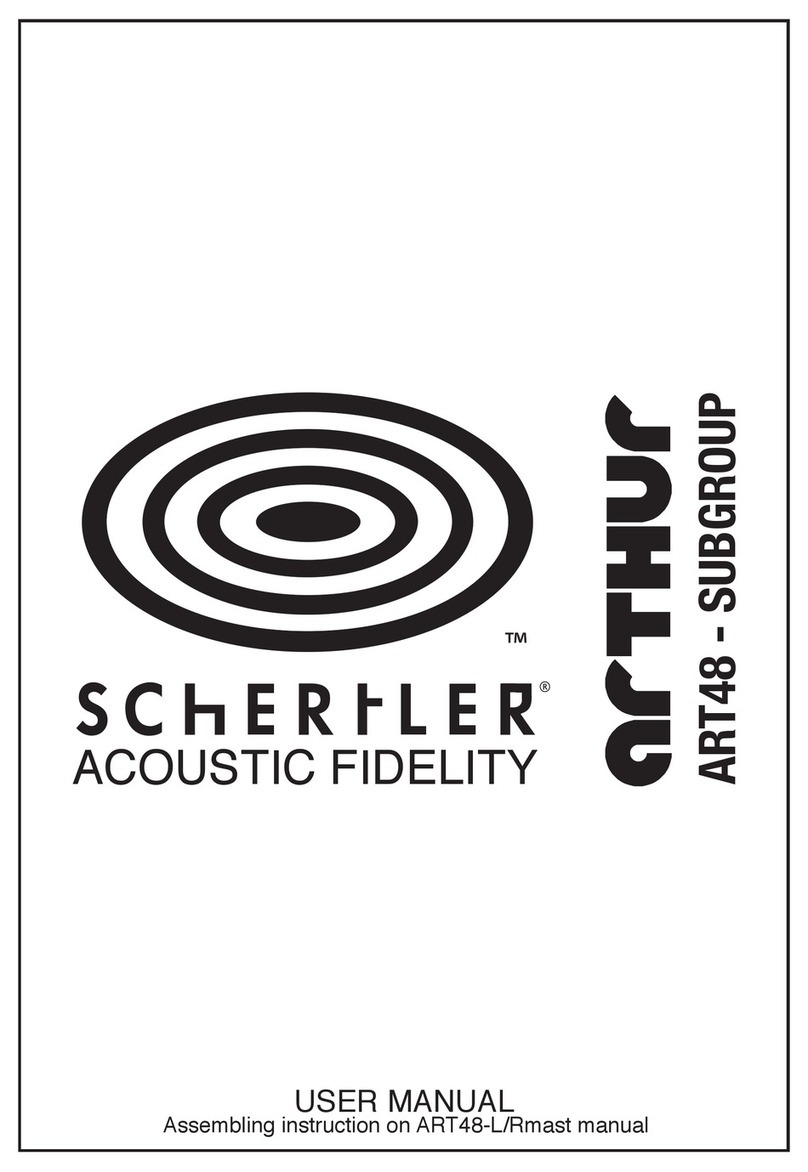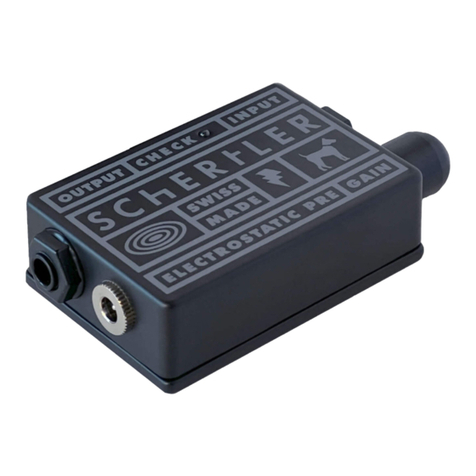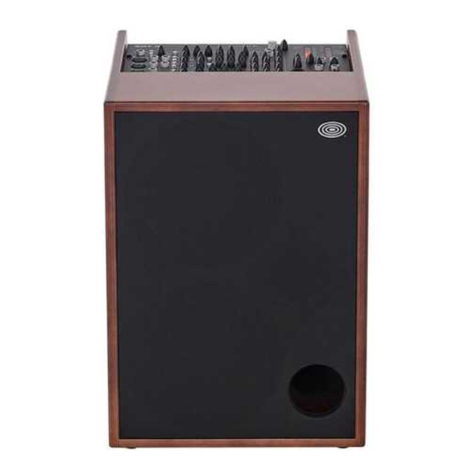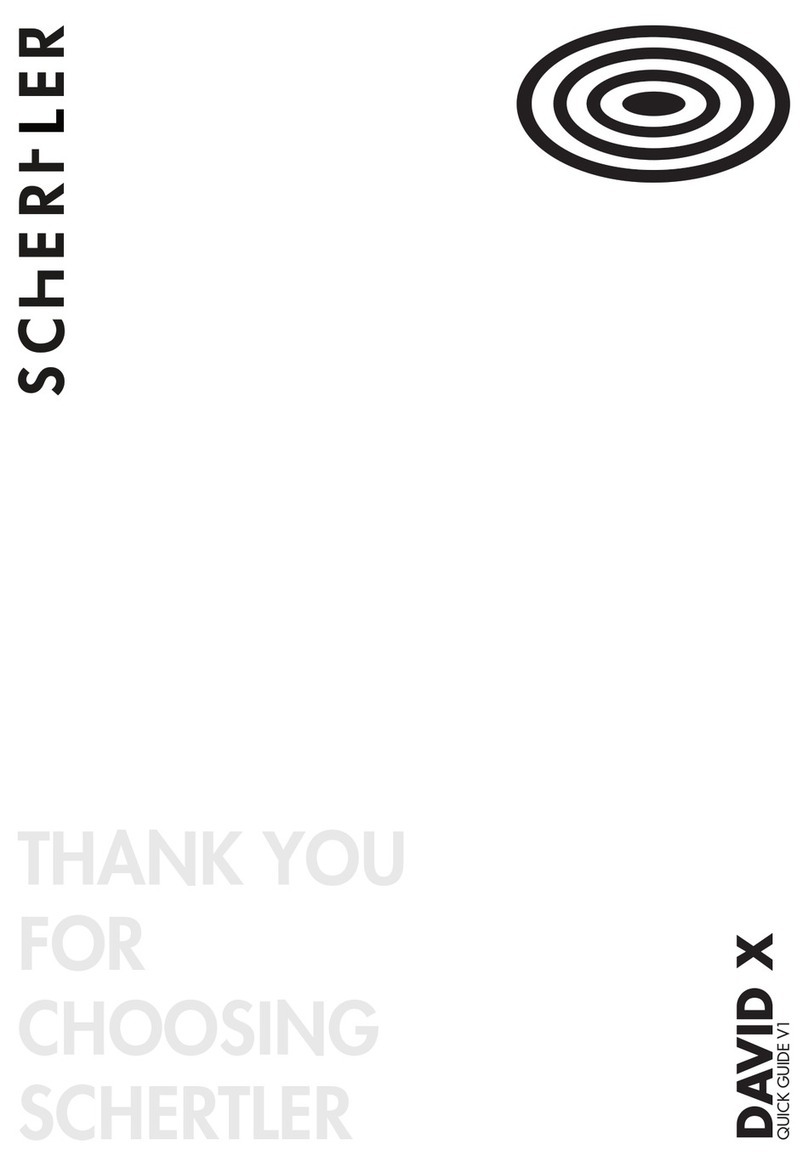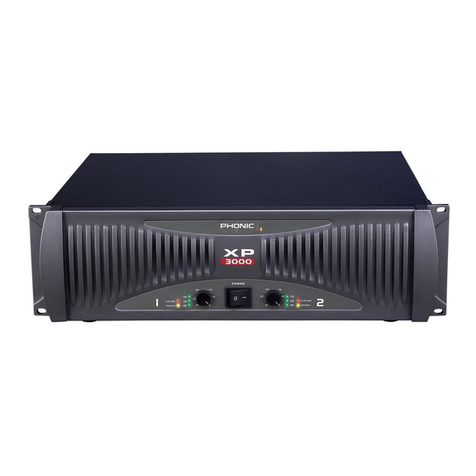
CONTROLS - CHANNEL 1, MIC
POTENTIOMETERS:
2.1.1. GAIN
This variable gain preamplier adjusts the sensitivity
level to ensure the best possible processing of the
signal through the channel. It is important that this
input level is set and optimised in the best way to
achieve the cleanest sound possible.
2.1.2. RESON
The Resonance (notch) lter cuts the frequency of
150Hz / 220Hz, to reduce low-frequency feedback.
- Left: no attenuation (at)
- Right: maximum attenuation
Use the reson switch to select the resonant
frequency of the instrument (150Hz / 220Hz).
2.1.3. HIGH, HIGH MID, LOW MID, LOW
These controls are dedicated for high, mid and low
frequency regulation. Offering cut and boost of +/-
15dB, they allow a wide range of tonal variations
to be explored. When the controls are positioned
centrally there is no cut or boost of the selected
frequency band.
2.1.4. SEND 1
This rotary control sets the output level on the
SEND OUT.
2.1.5. VOLUME
This rotary control regulates the channel volume. It
effects: SEND 1, DI-OUT, MASTER-OUT, PHONES.
SWITCHES:
2.2.1. ø (PHASE)
In case of feedback, or unwished effects between
different channels use the phase reverse switch!
2.2.2. PHANT (24V)
Phantom power supplies the XLR connector with
24V for powering condenser microphones.
2.2.3. -12dB (PAD)
If the input signal from jack input is too powerful and
you have overloads, use the PAD switch to have
12dB reduction.
LEDS:
2.3. OVERLOAD
This LED (when lit) indicates that the level of
the input signal is too high so it might introduce
distortions.
CONTROLS - CHANNEL 2, INSTRUMENT
POTENTIOMETERS:
3.1.1. GAIN
This variable gain preamplier adjusts the sensitivity
level to ensure the best possible processing of the
signal through the channel. It is important that this
input level is set and optimised in the best way to
achieve the cleanest sound possible.
3.1.2. . HIGH, HIGH MID, LOW MID, LOW
These controls are dedicated for high, mid and low
frequency regulation. Offering cut and boost of +/-
15dB, they allow a wide range of tonal variations
to be explored. When the controls are positioned
centrally there is no cut or boost of the selected
frequency band.
3.1.3. SEND 2
This rotary control sets the output level on the
SEND OUT.
3.1.4. VOLUME
This rotary control regulates the channel volume. It
effects: SEND 2, DI-OUT, MASTER-OUT, PHONES.
SWITCHES:
3.2.1. WARM
When engaged, this low-pass lter damps higher
frequencies to produce a warmer sound when using
bridge-mounted pickups such as Schertler STAT
series transducers for violin, cello and double bass.
3.2.2. 10V
Phantom power supplies the jack connector
with 10V for powering electret microphones and
Schertler Stat, Basik and Lydia series.
3.2.3. -12dB (PAD)
If the input signal from jack input is too powerful and
you have overloads, use the PAD switch to have
12dB reduction.
3.2.4. LOW CUT
The low cut switch cuts the frequencies below
120Hz.
LEDS:
3.3. OVERLOAD
This LED (when lit) indicates that the level of
the input signal is too high so it might introduce
distortions.
